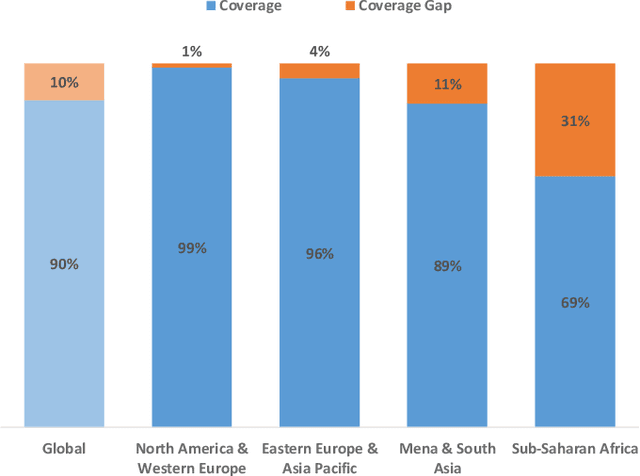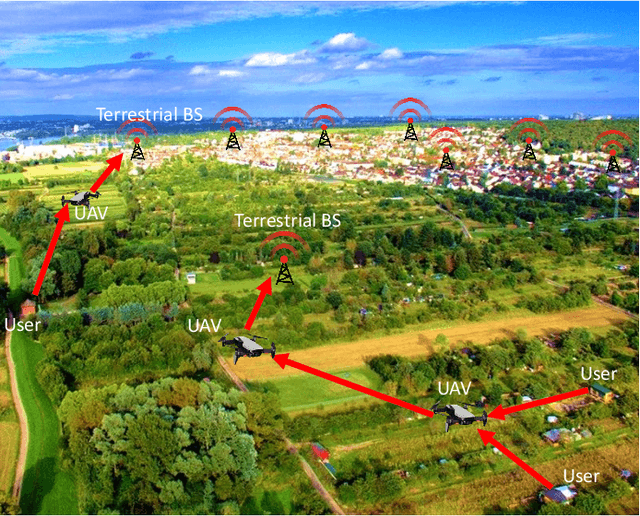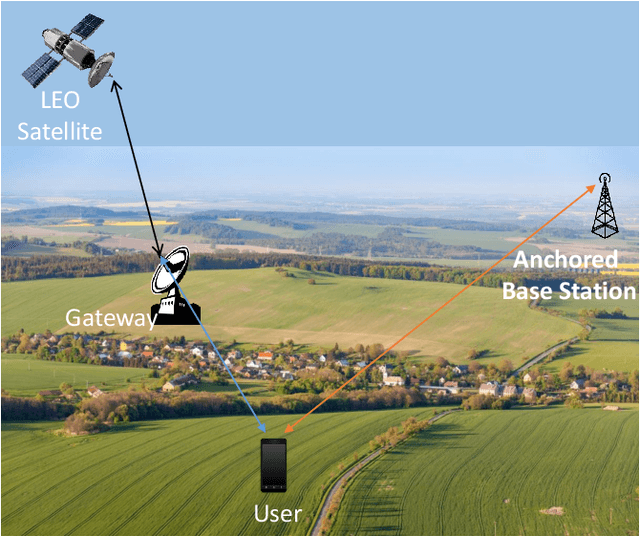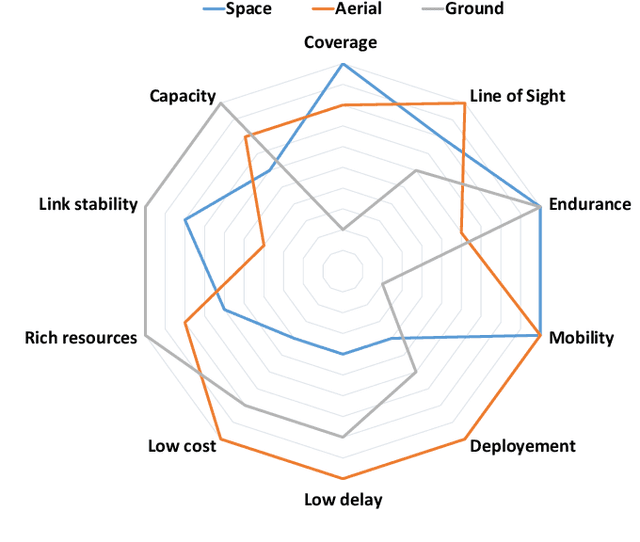Fares Fourati
Every Call is Precious: Global Optimization of Black-Box Functions with Unknown Lipschitz Constants
Feb 06, 2025Abstract:Optimizing expensive, non-convex, black-box Lipschitz continuous functions presents significant challenges, particularly when the Lipschitz constant of the underlying function is unknown. Such problems often demand numerous function evaluations to approximate the global optimum, which can be prohibitive in terms of time, energy, or resources. In this work, we introduce Every Call is Precious (ECP), a novel global optimization algorithm that minimizes unpromising evaluations by strategically focusing on potentially optimal regions. Unlike previous approaches, ECP eliminates the need to estimate the Lipschitz constant, thereby avoiding additional function evaluations. ECP guarantees no-regret performance for infinite evaluation budgets and achieves minimax-optimal regret bounds within finite budgets. Extensive ablation studies validate the algorithm's robustness, while empirical evaluations show that ECP outperforms 10 benchmark algorithms including Lipschitz, Bayesian, bandits, and evolutionary methods across 30 multi-dimensional non-convex synthetic and real-world optimization problems, which positions ECP as a competitive approach for global optimization.
ACING: Actor-Critic for Instruction Learning in Black-Box Large Language Models
Nov 19, 2024



Abstract:The effectiveness of Large Language Models (LLMs) in solving tasks vastly depends on the quality of the instructions, which often require fine-tuning through extensive human effort. This highlights the need for automated instruction optimization; however, this optimization is particularly challenging when dealing with black-box LLMs, where model parameters and gradients remain inaccessible. We propose ACING, a task-specific prompt optimization approach framed as a stateless continuous-action Reinforcement Learning (RL) problem, known as the continuum bandit setting. ACING leverages an actor-critic-based method to optimize prompts, learning from non-differentiable reward signals. We validate ACING by optimizing prompts for ChatGPT on 30 instruction-based tasks. ACING consistently outperforms baseline methods, achieving a median score improvement of 10 percentage points. Furthermore, ACING not only recovers but also surpasses human-crafted expert instructions, achieving up to a 39 percentage point improvement against human benchmarks.
Stochastic Q-learning for Large Discrete Action Spaces
May 16, 2024Abstract:In complex environments with large discrete action spaces, effective decision-making is critical in reinforcement learning (RL). Despite the widespread use of value-based RL approaches like Q-learning, they come with a computational burden, necessitating the maximization of a value function over all actions in each iteration. This burden becomes particularly challenging when addressing large-scale problems and using deep neural networks as function approximators. In this paper, we present stochastic value-based RL approaches which, in each iteration, as opposed to optimizing over the entire set of $n$ actions, only consider a variable stochastic set of a sublinear number of actions, possibly as small as $\mathcal{O}(\log(n))$. The presented stochastic value-based RL methods include, among others, Stochastic Q-learning, StochDQN, and StochDDQN, all of which integrate this stochastic approach for both value-function updates and action selection. The theoretical convergence of Stochastic Q-learning is established, while an analysis of stochastic maximization is provided. Moreover, through empirical validation, we illustrate that the various proposed approaches outperform the baseline methods across diverse environments, including different control problems, achieving near-optimal average returns in significantly reduced time.
Federated Combinatorial Multi-Agent Multi-Armed Bandits
May 09, 2024



Abstract:This paper introduces a federated learning framework tailored for online combinatorial optimization with bandit feedback. In this setting, agents select subsets of arms, observe noisy rewards for these subsets without accessing individual arm information, and can cooperate and share information at specific intervals. Our framework transforms any offline resilient single-agent $(\alpha-\epsilon)$-approximation algorithm, having a complexity of $\tilde{\mathcal{O}}(\frac{\psi}{\epsilon^\beta})$, where the logarithm is omitted, for some function $\psi$ and constant $\beta$, into an online multi-agent algorithm with $m$ communicating agents and an $\alpha$-regret of no more than $\tilde{\mathcal{O}}(m^{-\frac{1}{3+\beta}} \psi^\frac{1}{3+\beta} T^\frac{2+\beta}{3+\beta})$. This approach not only eliminates the $\epsilon$ approximation error but also ensures sublinear growth with respect to the time horizon $T$ and demonstrates a linear speedup with an increasing number of communicating agents. Additionally, the algorithm is notably communication-efficient, requiring only a sublinear number of communication rounds, quantified as $\tilde{\mathcal{O}}\left(\psi T^\frac{\beta}{\beta+1}\right)$. Furthermore, the framework has been successfully applied to online stochastic submodular maximization using various offline algorithms, yielding the first results for both single-agent and multi-agent settings and recovering specialized single-agent theoretical guarantees. We empirically validate our approach to a stochastic data summarization problem, illustrating the effectiveness of the proposed framework, even in single-agent scenarios.
Combinatorial Stochastic-Greedy Bandit
Dec 13, 2023Abstract:We propose a novel combinatorial stochastic-greedy bandit (SGB) algorithm for combinatorial multi-armed bandit problems when no extra information other than the joint reward of the selected set of $n$ arms at each time step $t\in [T]$ is observed. SGB adopts an optimized stochastic-explore-then-commit approach and is specifically designed for scenarios with a large set of base arms. Unlike existing methods that explore the entire set of unselected base arms during each selection step, our SGB algorithm samples only an optimized proportion of unselected arms and selects actions from this subset. We prove that our algorithm achieves a $(1-1/e)$-regret bound of $\mathcal{O}(n^{\frac{1}{3}} k^{\frac{2}{3}} T^{\frac{2}{3}} \log(T)^{\frac{2}{3}})$ for monotone stochastic submodular rewards, which outperforms the state-of-the-art in terms of the cardinality constraint $k$. Furthermore, we empirically evaluate the performance of our algorithm in the context of online constrained social influence maximization. Our results demonstrate that our proposed approach consistently outperforms the other algorithms, increasing the performance gap as $k$ grows.
FilFL: Accelerating Federated Learning via Client Filtering
Feb 13, 2023Abstract:Federated learning is an emerging machine learning paradigm that enables devices to train collaboratively without exchanging their local data. The clients participating in the training process are a random subset selected from the pool of clients. The above procedure is called client selection which is an important area in federated learning as it highly impacts the convergence rate, learning efficiency, and generalization. In this work, we introduce client filtering in federated learning (FilFL), a new approach to optimize client selection and training. FilFL first filters the active clients by choosing a subset of them that maximizes a specific objective function; then, a client selection method is applied to that subset. We provide a thorough analysis of its convergence in a heterogeneous setting. Empirical results demonstrate several benefits to our approach, including improved learning efficiency, accelerated convergence, $2$-$3\times$ faster, and higher test accuracy, around $2$-$10$ percentage points higher.
Randomized Greedy Learning for Non-monotone Stochastic Submodular Maximization Under Full-bandit Feedback
Feb 02, 2023Abstract:We investigate the problem of unconstrained combinatorial multi-armed bandits with full-bandit feedback and stochastic rewards for submodular maximization. Previous works investigate the same problem assuming a submodular and monotone reward function. In this work, we study a more general problem, i.e., when the reward function is not necessarily monotone, and the submodularity is assumed only in expectation. We propose Randomized Greedy Learning (RGL) algorithm and theoretically prove that it achieves a $\frac{1}{2}$-regret upper bound of $\tilde{\mathcal{O}}(n T^{\frac{2}{3}})$ for horizon $T$ and number of arms $n$. We also show in experiments that RGL empirically outperforms other full-bandit variants in submodular and non-submodular settings.
Bridging the Urban-Rural Connectivity Gap through Intelligent Space, Air, and Ground Networks
Feb 25, 2022



Abstract:Connectivity in rural areas is one of the main challenges of communication networks. To overcome this challenge, a variety of solutions for different situations are required. Optimizing the current networking paradigms is therefore mandatory. The high costs of infrastructure and the low revenue of cell sites in rural areas compared with urban areas are especially unattractive for telecommunication operators. Therefore, space, air, and ground networks should all be optimized for achieving connectivity in rural areas. We highlight the latest works on rural connectivity, discuss the solutions for terrestrial networks, and study the potential benefits of nonterrestrial networks. Furthermore, we present an overview of artificial intelligence (AI) techniques for improving space, air, and ground networks, hence improving connectivity in rural areas. AI enables intelligent communications and can integrate space, air, and ground networks for rural connectivity. We discuss the rural connectivity challenges and highlight the latest projects and research and the empowerment of networks using AI. Finally, we discuss the potential positive impacts of providing connectivity to rural communities.
Artificial Intelligence for Satellite Communication: A Review
Jan 25, 2021



Abstract:Satellite communication offers the prospect of service continuity over uncovered and under-covered areas, service ubiquity, and service scalability. However, several challenges must first be addressed to realize these benefits, as the resource management, network control, network security, spectrum management, and energy usage of satellite networks are more challenging than that of terrestrial networks. Meanwhile, artificial intelligence (AI), including machine learning, deep learning, and reinforcement learning, has been steadily growing as a research field and has shown successful results in diverse applications, including wireless communication. In particular, the application of AI to a wide variety of satellite communication aspects have demonstrated excellent potential, including beam-hopping, anti-jamming, network traffic forecasting, channel modeling, telemetry mining, ionospheric scintillation detecting, interference managing, remote sensing, behavior modeling, space-air-ground integrating, and energy managing. This work thus provides a general overview of AI, its diverse sub-fields, and its state-of-the-art algorithms. Several challenges facing diverse aspects of satellite communication systems are then discussed, and their proposed and potential AI-based solutions are presented. Finally, an outlook of field is drawn, and future steps are suggested.
An original framework for Wheat Head Detection using Deep, Semi-supervised and Ensemble Learning within Global Wheat Head Detection (GWHD) Dataset
Sep 24, 2020


Abstract:In this paper, we propose an original object detection methodology applied to Global Wheat Head Detection (GWHD) Dataset. We have been through two major architectures of object detection which are FasterRCNN and EfficientDet, in order to design a novel and robust wheat head detection model. We emphasize on optimizing the performance of our proposed final architectures. Furthermore, we have been through an extensive exploratory data analysis and adapted best data augmentation techniques to our context. We use semi supervised learning to boost previous supervised models of object detection. Moreover, we put much effort on ensemble to achieve higher performance. Finally we use specific post-processing techniques to optimize our wheat head detection results. Our results have been submitted to solve a research challenge launched on the GWHD Dataset which is led by nine research institutes from seven countries. Our proposed method was ranked within the top 6% in the above mentioned challenge.
 Add to Chrome
Add to Chrome Add to Firefox
Add to Firefox Add to Edge
Add to Edge